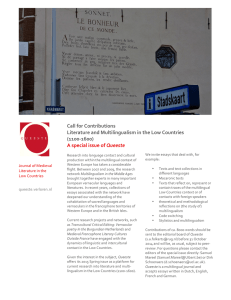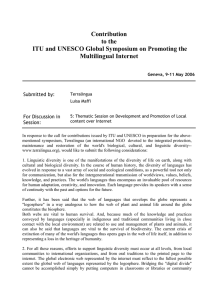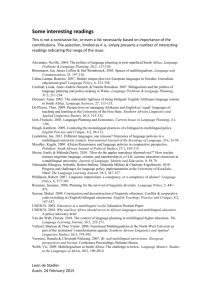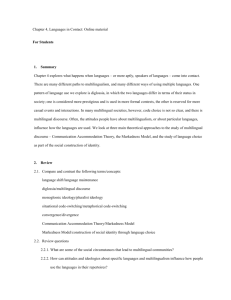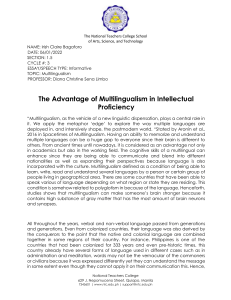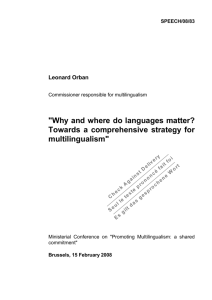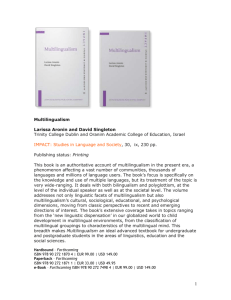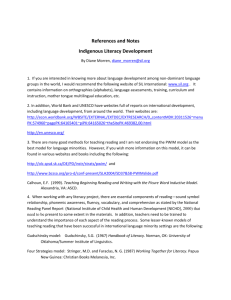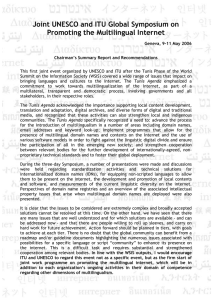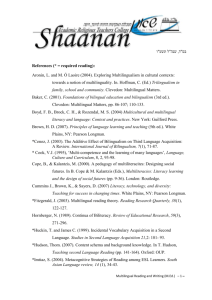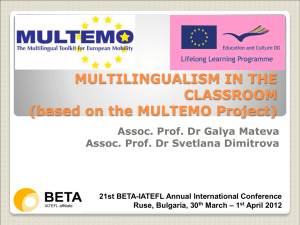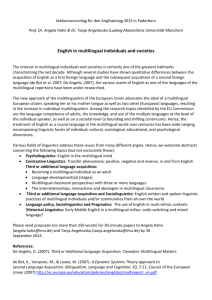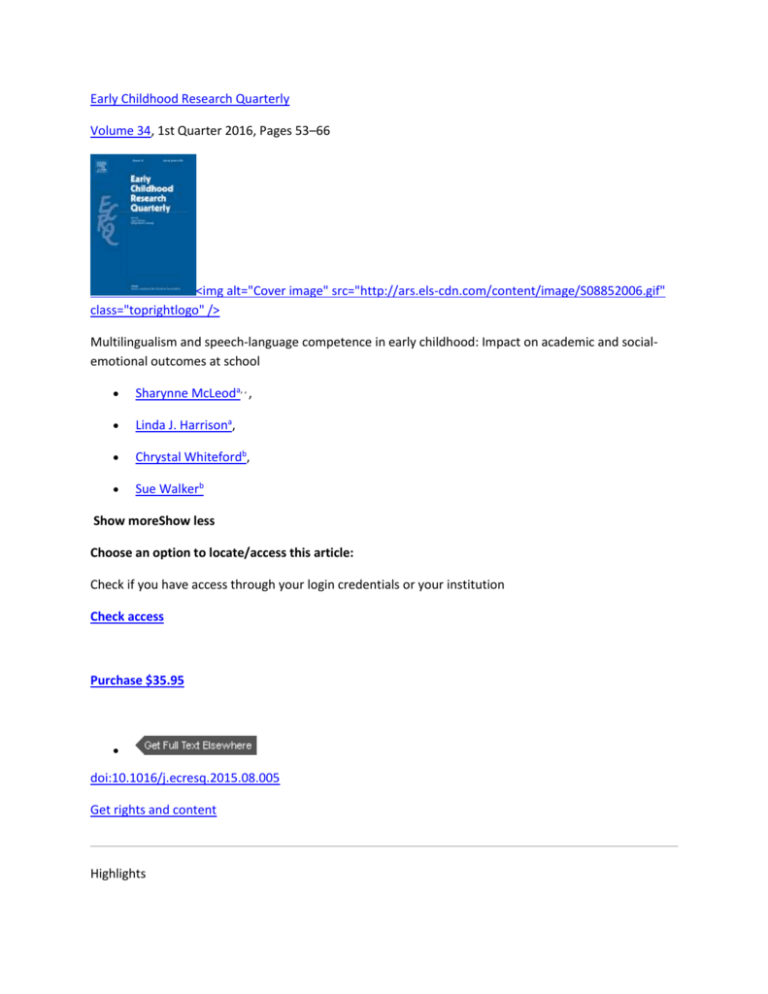
Early Childhood Research Quarterly
Volume 34, 1st Quarter 2016, Pages 53–66
<img alt="Cover image" src="http://ars.els-cdn.com/content/image/S08852006.gif"
class="toprightlogo" />
Multilingualism and speech-language competence in early childhood: Impact on academic and socialemotional outcomes at school
Sharynne McLeoda, , ,
Linda J. Harrisona,
Chrystal Whitefordb,
Sue Walkerb
Show moreShow less
Choose an option to locate/access this article:
Check if you have access through your login credentials or your institution
Check access
Purchase $35.95
doi:10.1016/j.ecresq.2015.08.005
Get rights and content
Highlights
•
Academic and social-emotional outcomes were examined for a population sample of 4983 children
followed from 4–5 years to 8–9 years.
•
Multilingualism was not found to contribute to poorer educational and social-emotional outcomes at
school.
•
The main predictor of academic difficulties at school was concern about 4- to 5-year-old children’s
speech and language (regardless of whether they spoke English-only or were multilingual).
Abstract
This large-scale longitudinal population study provided a rare opportunity to consider the interface
between multilingualism and speech-language competence on children’s academic and social-emotional
outcomes and to determine whether differences between groups at 4–5 years persist, deepen, or
disappear with time and schooling. Four distinct groups were identified from the Kindergarten cohort of
the Longitudinal Study of Australian Children (LSAC) (1) English-only + typical speech and language
(n = 2012); (2) multilingual + typical speech and language (n = 476); (3) English-only + speech and
language concern (n = 643); and (4) multilingual + speech and language concern (n = 109). Two analytic
approaches were used to compare these groups. First, a matched case-control design was used to
randomly match multilingual children with speech and language concern (group 4, n = 109) to children in
groups 1–3 on gender, age, and family socio-economic position in a cross-sectional comparison of
vocabulary, school readiness, and behavioral adjustment. Next, analyses were applied to the whole
sample to determine longitudinal effects of group membership on teachers' ratings of literacy,
numeracy, and behavioral adjustment at ages 6–7 and 8–9 years. At 4–5 years, multilingual children
with speech and language concern did equally well or better than English-only children (with or without
speech and language concern) on school readiness tests but performed more poorly on measures of
English vocabulary and behavior. At ages 6–7 and 8–9, the early gap between English-only and
multilingual children had closed. Multilingualism was not found to contribute to differences in literacy
and numeracy outcomes at school; instead, outcomes were more related to concerns about children’s
speech and language in early childhood. There were no group differences for socio-emotional outcomes.
Early evidence for the combined risks of multilingualism plus speech and language concern was not
upheld into the school years.
Keywords
Bilingual;
Multilingual;
Dual language learner (DLL);
Educational outcomes;
Social-emotional outcomes;
Speech;
Language;
Communication;
Literacy;
Reading;
Numeracy;
Mathematics
Corresponding author at: Charles Sturt University, Bathurst, NSW, 2795, Australia.
Copyright © 2015 Elsevier Inc. All rights reserved.

